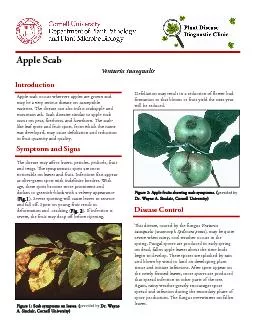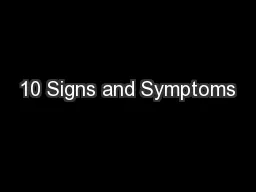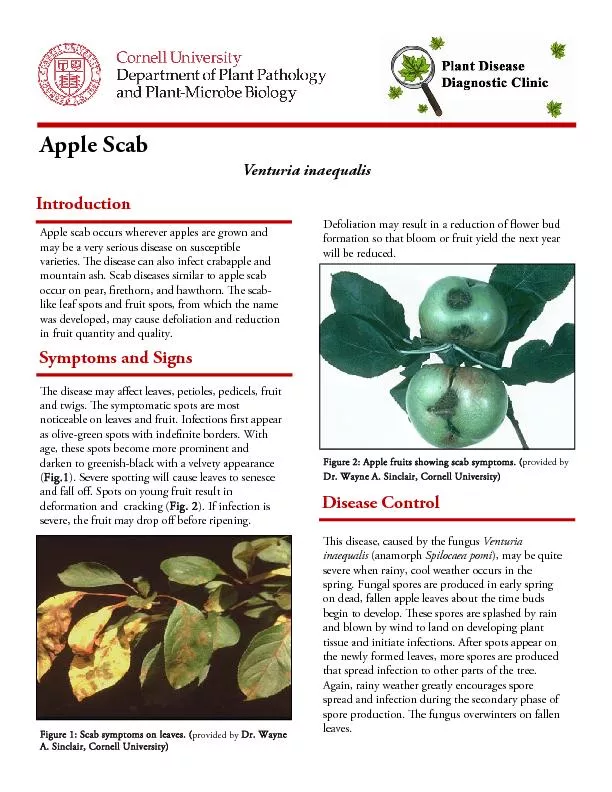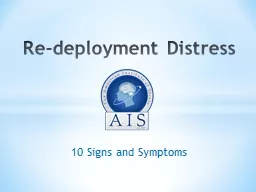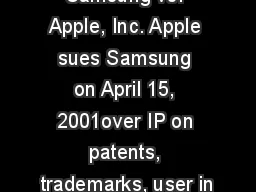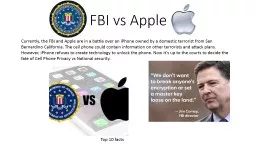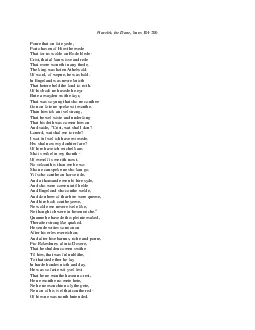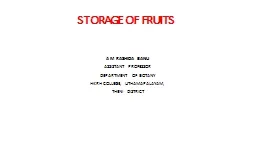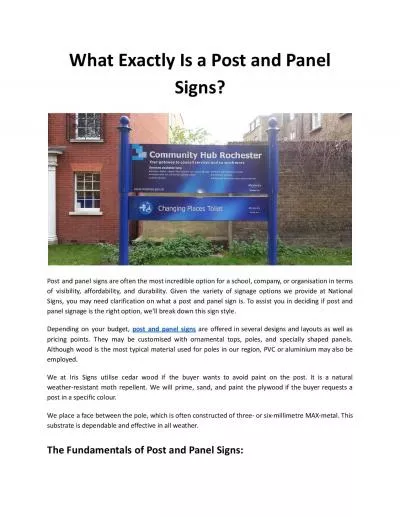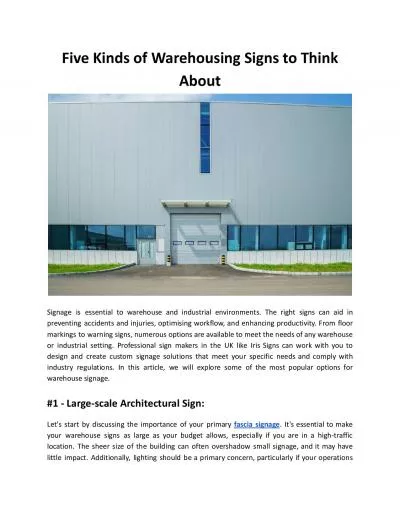PDF-Symptoms and Signs Venturia inaequalisFigure 2: Apple fruits sho
Author : tatyana-admore | Published Date : 2017-11-27
Apple Scab Introduction provided by Dr Wayne A Sinclair Cornell University Disease Control Apple scab occurs wherever apples are grown and varieties e disease can
Presentation Embed Code
Download Presentation
Download Presentation The PPT/PDF document "Symptoms and Signs Venturia inaequ..." is the property of its rightful owner. Permission is granted to download and print the materials on this website for personal, non-commercial use only, and to display it on your personal computer provided you do not modify the materials and that you retain all copyright notices contained in the materials. By downloading content from our website, you accept the terms of this agreement.
Symptoms and Signs Venturia inaequalisFigure 2: Apple fruits sho: Transcript
Download Rules Of Document
"Symptoms and Signs Venturia inaequalisFigure 2: Apple fruits sho"The content belongs to its owner. You may download and print it for personal use, without modification, and keep all copyright notices. By downloading, you agree to these terms.
Related Documents

